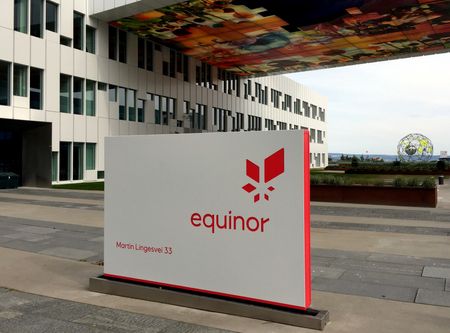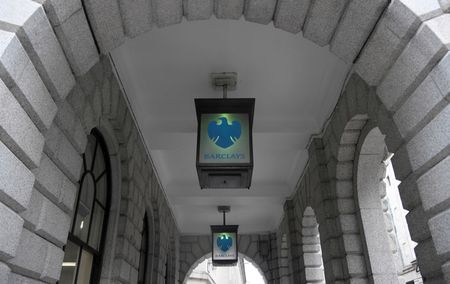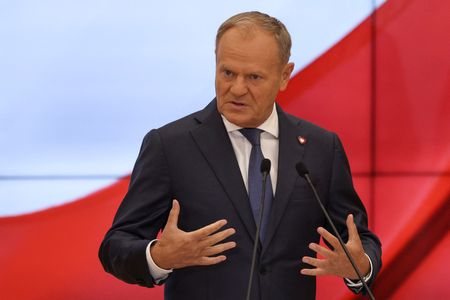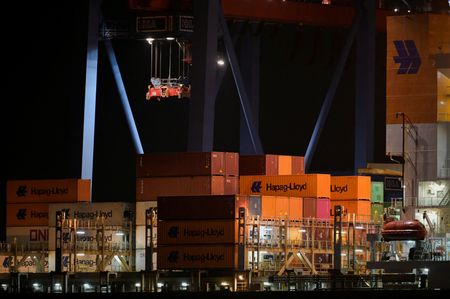By Gwladys Fouche and Nerijus Adomaitis
OSLO (Reuters) -Norway’s Equinor booked on Wednesday a $955 million impairment on an offshore wind project in the United States, citing U.S. tariffs and the uncertainty of the U.S. regulatory environment under President Donald Trump.
Hopes the industry had harboured that projects in the United States would revive the sector were dashed on Trump’s first day back in office in January when he suspended offshore wind leases.
Then in April, Interior Secretary Doug Burgum shut down Equinor’s Empire Wind development in New York state. He later lifted the stop-work order on the project.
For Equinor, however, the damage has been done.
On Wednesday, it reported its net operating income for the second quarter fell due to having to book a near-billion dollar impairment on its U.S. offshore wind projects.
Equinor CFO Torgrim Reitan said a combination of tariffs, the U.S. administration changing its mind on developing offshore wind, and the removal of tax credits had affected the value of the group’s large onshore terminal in South Brooklyn, built to serve offshore wind farm installations.
“(The impairment) is driven by regulatory changes in the U.S., particularly related to that investment tax credits have been taken away for new developments. You also have tariffs, and there’s also a presidential order stopping permitting of new offshore wind projects,” Reitan told Reuters.
“It is those new offshore wind projects that drive the impairment, because we have a terminal, the South Brooklyn Marine terminal, where we had assumed two more developments than our own Empire Wind to pay for that. That is now unlikely.”
Out of the $955 million impairment, $763 million is related to Empire Wind 1 and its South Brooklyn Marine Terminal project, with the remainder related to the lease of the Empire Wind 2 farm, the company said.
Equinor, majority-owned by the Norwegian state, had won a federal lease for Empire Wind in 2017 under Trump’s first administration and secured approval for its investment plans in 2023 during former President Joe Biden’s time in the White House.
Tariffs, including on steel, had increased costs on the project by $300 million, Reitan said. Equinor would still receive tax credits for the first phase of Empire Wind, but not for the second one.
“Without investment tax credits and without a government that wants it to happen, we are not going to invest in it,” said Reitan.
The global offshore wind market, once touted by governments as a cornerstone of efforts to cut carbon emissions, has faltered under escalating costs and logistical setbacks.
The total book value after the latest impairments was $2.3 billion, Equinor said on Wednesday.
With a planned installed capacity of 810 megawatts, Empire Wind 1 could generate enough electricity to power half a million homes a year and was expected to begin operating in 2027.
Equinor on Wednesday also reported a decline in core second-quarter results, as expected, due to lower oil prices.
(Reporting by Gwladys Fouche and Nerijus Adomaitis; additional reporting by Stine Jacobsen in Copenhagen; Editing by Terje Solsvik, Jacqueline Wong and Barbara Lewis)











